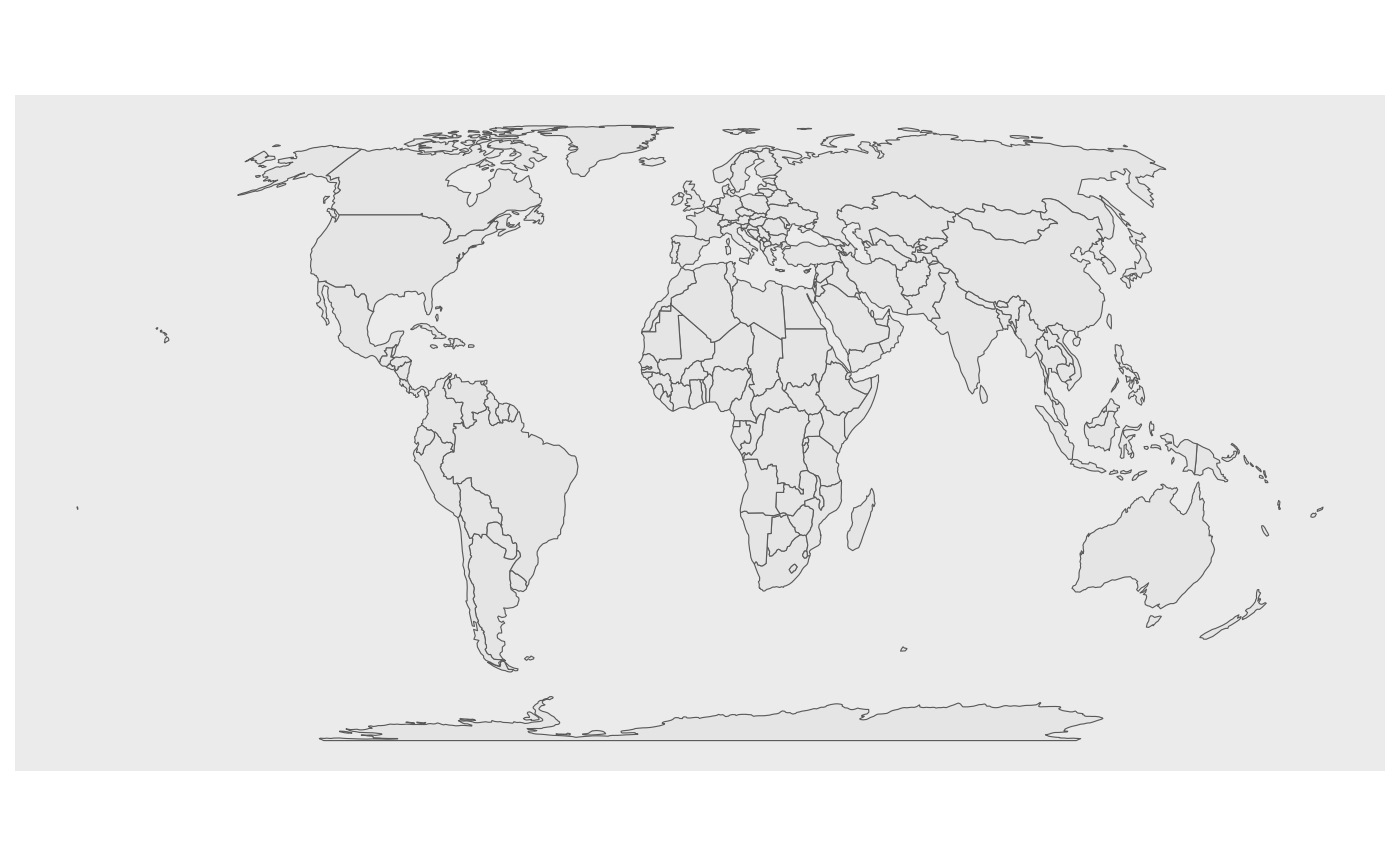A function that uses geotools::gtl_crs_proj() to
get the CRS configuration and applies it to a ggplot2
map.
Arguments
- code
A string with the CRS identifier
- ...
Arguments passed on to
ggplot2::coord_sfxlim,ylimLimits for the x and y axes. These limits are specified in the units of the default CRS. By default, this means projected coordinates (
default_crs = NULL). How limit specifications translate into the exact region shown on the plot can be confusing when non-linear or rotated coordinate systems are used as the default crs. First, different methods can be preferable under different conditions. See parameterlims_methodfor details. Second, specifying limits along only one direction can affect the automatically generated limits along the other direction. Therefore, it is best to always specify limits for both x and y. Third, specifying limits via position scales orxlim()/ylim()is strongly discouraged, as it can result in data points being dropped from the plot even though they would be visible in the final plot region.expandIf
TRUE, the default, adds a small expansion factor to the limits to ensure that data and axes don't overlap. IfFALSE, limits are taken exactly from the data orxlim/ylim.crsThe coordinate reference system (CRS) into which all data should be projected before plotting. If not specified, will use the CRS defined in the first sf layer of the plot.
default_crsThe default CRS to be used for non-sf layers (which don't carry any CRS information) and scale limits. The default value of
NULLmeans that the setting forcrsis used. This implies that all non-sf layers and scale limits are assumed to be specified in projected coordinates. A useful alternative setting isdefault_crs = sf::st_crs(4326), which means x and y positions are interpreted as longitude and latitude, respectively, in the World Geodetic System 1984 (WGS84).datumCRS that provides datum to use when generating graticules.
label_graticuleCharacter vector indicating which graticule lines should be labeled where. Meridians run north-south, and the letters
"N"and"S"indicate that they should be labeled on their north or south end points, respectively. Parallels run east-west, and the letters"E"and"W"indicate that they should be labeled on their east or west end points, respectively. Thus,label_graticule = "SW"would label meridians at their south end and parallels at their west end, whereaslabel_graticule = "EW"would label parallels at both ends and meridians not at all. Because meridians and parallels can in general intersect with any side of the plot panel, for any choice oflabel_graticulelabels are not guaranteed to reside on only one particular side of the plot panel. Also,label_graticulecan cause labeling artifacts, in particular if a graticule line coincides with the edge of the plot panel. In such circumstances,label_axeswill generally yield better results and should be used instead.This parameter can be used alone or in combination with
label_axes.label_axesCharacter vector or named list of character values specifying which graticule lines (meridians or parallels) should be labeled on which side of the plot. Meridians are indicated by
"E"(for East) and parallels by"N"(for North). Default is"--EN", which specifies (clockwise from the top) no labels on the top, none on the right, meridians on the bottom, and parallels on the left. Alternatively, this setting could have been specified withlist(bottom = "E", left = "N").This parameter can be used alone or in combination with
label_graticule.lims_methodMethod specifying how scale limits are converted into limits on the plot region. Has no effect when
default_crs = NULL. For a very non-linear CRS (e.g., a perspective centered around the North pole), the available methods yield widely differing results, and you may want to try various options. Methods currently implemented include"cross"(the default),"box","orthogonal", and"geometry_bbox". For method"cross", limits along one direction (e.g., longitude) are applied at the midpoint of the other direction (e.g., latitude). This method avoids excessively large limits for rotated coordinate systems but means that sometimes limits need to be expanded a little further if extreme data points are to be included in the final plot region. By contrast, for method"box", a box is generated out of the limits along both directions, and then limits in projected coordinates are chosen such that the entire box is visible. This method can yield plot regions that are too large. Finally, method"orthogonal"applies limits separately along each axis, and method"geometry_bbox"ignores all limit information except the bounding boxes of any objects in thegeometryaesthetic.ndiscrNumber of segments to use for discretising graticule lines; try increasing this number when graticules look incorrect.
defaultIs this the default coordinate system? If
FALSE(the default), then replacing this coordinate system with another one creates a message alerting the user that the coordinate system is being replaced. IfTRUE, that warning is suppressed.clipShould drawing be clipped to the extent of the plot panel? A setting of
"on"(the default) means yes, and a setting of"off"means no. In most cases, the default of"on"should not be changed, as settingclip = "off"can cause unexpected results. It allows drawing of data points anywhere on the plot, including in the plot margins. If limits are set viaxlimandylimand some data points fall outside those limits, then those data points may show up in places such as the axes, the legend, the plot title, or the plot margins.
Examples
rnaturalearth::ne_countries() |>
ggplot2::ggplot() +
ggplot2::geom_sf() +
ggeo_coord("eqearth")

